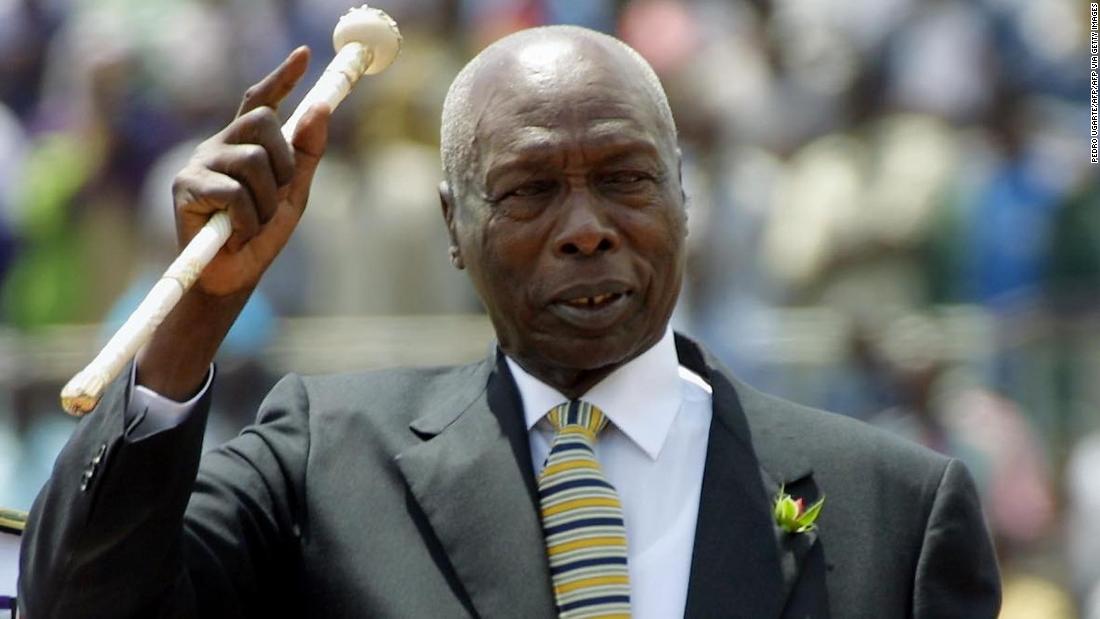Declaring Tuesday a public holiday, President Uhuru Kenyatta said, “… we commence the final journey of a great son of Kenya, a cherished brother, a loving father, a mentor to many, a father of our nation, a champion of pan-Africanism and the second president of the republic of Kenya.”
His body has been displayed at the parliament building in Nairobi for three days as people came to pay their last respects to a man whose name evokes mixed emotions among Kenyans across generations.
To some he was a personable and popular leader who was in touch with the common man, to others he was a despot, one who dealt ruthlessly with his opponents.
First Lady Margaret Kenyatta said earlier this week as she attended his lying in state with her husband, “I remember Moi as a president who helped people … he paid school fees for children. May God rest his soul in eternal peace.”
However, one man who remembers him altogether differently was Reverend Timothy Njoya, 66, now a retired Presbyterian Church of East Africa Minister.
Njoya, who holds a Doctor of Philosophy from Princeton University, says he frequently clashed with Moi over his refusal to end single-party rule and reinstate democracy in the country.
Njoya used his pulpit to urge civil disobedience to force the government to change the constitution and demonstrated on the streets.
“I was arrested so many times for saying that Kenyans should not pay taxes,” he recalls during an interview with CNN at his home in Nairobi.
A violent time
It was a violent time, full of overbearing state security operatives and deaths on the streets in various protests, he says.
Njoya would pay a heavy price for his activism. First, he says he was defrocked at Moi’s insistence in 1997 and lost his collar.
Then he almost lost his life too, he says.
“I was almost killed at All Saints Cathedral. They left me for dead and I was being taken to the mortuary until a doctor insisted I should be taken to the intensive care unit at Nairobi Hospital.
“I had a broken skull which was a centimeter from touching the brain. I had a fractured wrist. All four fingers on one hand were broken. I had to go to Canada for treatment. According to the doctor, I had 52 injuries on my body including many broken ribs.”
Two years later, Njoya says Moi sent his henchmen after him again.
“That time they left me for dead again. They had used ‘pangas,’ you know those long knives. I lost three of my fingers, but they were sewn back by the doctors. But emerging from hospital I went back on the streets because I couldn’t disappoint the people.”
Secret torture chamber
When it was set up in 2008, Moi refused to engage with the nation’s Truth, Justice and Reconciliation Commission.
Moi’s representative declined to comment when contacted by CNN.
Despite their differences Reverend Njoya says, that “Moi is the best president that ever lived.”
“Even if we had fought and died for multiparty democracy, he was the one who declared it. We were the ones who wanted a new constitution and he was the one who declared it. Admission to a mistake is the greatest thing in humanity.
“Future leaders can learn to admit when they are wrong,” he said.
Correction: An earlier version of this story misstated when Moi’s burial would take place. This has been corrected.
Source: CNN Africa

